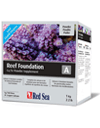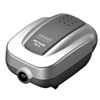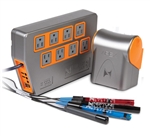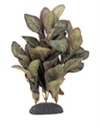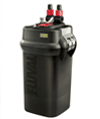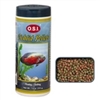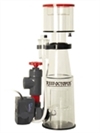
Ich
Ich Ich is the most common saltwater fish disease and it is present in nearly every aquarium. When a fish is infected by ich it looks like the fish is covered in white spots, almost like someone sprinkled the fish with salt grains. These spots are small parasites that are attached to the body of the fish. Contrary to popular belief, Ich is not a death sentence. Healthy fish can recover from ich without any intervention. However, if a fish is stressed from being picked on, poor nutrition, or recently moved to a new tank then ich can lead to the death of the fish.
What do you do about ich? In most circumstances, healthy fish will recover from ich on their own. If the infection appears to be getting worse, more fish infected or some fish getting more and more spots, then you may want to medicate the fish. There is one tried and true medication for treating ich, copper. Our favorite copper treatment is Copper Power. There is a saltwater version and a freshwater version. To use Copper Power, remove all chemical filtration media, turn off your UV sterilizer, and then add the amount recommended to the aquarium. To make sure you added the right amount of copper since the actual water volume is affected by the displacement of rocks and substrate in the aquarium, you can confirm the level of copper in the aquarium with a Hanna Copper Checker. Maintain a copper level of 1.5-2 ppm for at least 1 week to kill ich.
Unfortunately, Copper is highly toxic to invertebrates and corals making it unsuitable for use in reef aquariums. If you have an ich outbreak in a reef aquarium the best practice is to feed your fish well with vitamin-enriched foods to promote immune health. We suggest Boydís VitaChem. Try your best to reduce stress by removing any aggressive tank mates, and consider adding a UV sterilizer to prevent ich.
A UV sterilizer can not kill ich on a fish but it can help slow the spread of ich by killing ich in the water column before it can infect fish.
If you have a fish that has a particularly bad ich infection, then you may want to remove the fish and treat it with copper in a hospital tank.
Aiptasia
Aiptasia is a genus of pest anemone that is very common. aiptasia makes its way into nearly every reef aquarium by hitchhiking on rocks or corals added to the aquarium. Aiptasia reproduces extremely quickly and because it is an anemone it stings nearby corals. Ultimately Aiptasia can kill corals from surrounding them, smothering them, and stinging them.
Luckily Aiptasia is relatively easy to deal with. We recommend using a combination of manually killing the anemones and adding natural predators to get rid of aiptasia. To manually kill the anemones the most popular method is to smother the anemones in an aiptasia killing product. Our favorite is F-Aiptasia. If you have a bad outbreak or you hate buying bottles of chemicals then you may want to consider a Majano Wand which uses electrolysis to melt the anemones. Unfortunately, no matter how hard you try you will never find every last anemone. If you rely on manual removal to eliminate aiptasia you will be manually killing the anemones forever. Because of this, we recommend adding a natural Aiptasia predator to every reef aquarium. There are a variety of predators to pick from with different strengths and weaknesses to each choice.
- Fish
There are many fish that eat Aiptasia. Unfortunately, most of these fish are known to occasionally nip at certain corals. The two most common fish added for Aiptasia control are the copperband butterfly fish and the leafy file fish. Of these two fish, the file fish is much easier to care for but the butterfly fish is far more beautiful. The biggest advantage of fish is that one of these fish can eat hundreds of Aiptasia over time and if you keep the fish in the tank, they will eat any new aiptasia as soon they appear.
- Peppermint Shrimp
Peppermint shrimp can eat aiptasia and they are much smaller than fish so they are a better choice for nano aquariums, and peppermint shrimp do not nip at or eat corals like the fish occasionally can. The biggest disadvantage of using peppermint shrimp for Aiptasia control is that the shrimp often only live 2-3 years in captivity and due to their size many are needed for effective control. Additionally, some common fish such as hawk fish and wrasses will eat peppermint shrimp. We typically recommend 1 shrimp per 10 gallons which is a lot of shrimp. This makes fish a much better choice for larger aquariums or aquariums with a very bad aiptasia infestation.
- Berghia Nudibranchs
Berghia nudibranchs are a species of sea slug that eats nothing but aiptasia. Berghia are often purchased in small groups that will reproduce in the aquarium until they eat all of the aiptasia in the aquarium and then die of starvation. This is great because there is no chance of the nudibranchs eating any corals and they can completely wipe out all aiptasia in the tank. Unfortunately, some common fish like wrasses will eat the nudibranchs stopping them from doing their job. Additionally, once the nudibranchs die of starvation if another anemone gets introduced you will need to repeat the process of adding the nudibranchs all over again. Shrimp or fish will continue to live in the aquarium and eliminate any additional aiptasia as they are introduced.
Red Flatworms
Red flatworms, sometimes called red planaria, are small red flatworms no bigger than the tip of a marker that scavenge for uneaten food in aquariums. Unfortunately, red flatworms can reproduce to unthinkable numbers very quickly and they often congregate around or near corals annoying them and slowing their growth. In sever cases, it can lead to the death of the corals.
To get rid of red flatworms you can dip corals in a therapeutic dip, add predators, or treat the tank with a medication. If a coral is surrounded or covered with flatworms you can remove the coral and place it in a medicated coral dip. Our favorite is Two Little Fishies Revive. The dip will stun the worms causing them to fall off the coral. You will want to swish the coral around in the dip for the duration of the treatment to dislodge the stunned worms from the coral. After the dip is done you can return the coral to the tank.
Unfortunately, if there are still worms in the tank, they will eventually smother the coral again. To help keep the worms at bay the best approach is to add predators such as a melanurus wrasse, yellow coris wrasse, or sixline wrasse. These wrasses will eat the worms and stop the population from getting out of control. In extreme outbreaks, you can treat the entire tank for worms. Salifert Flatworm Exit will kill flatworms in the aquarium very effectively. Unfortunately, when flatworms die they release a toxin that can poison animals in the tank. Make sure that you follow the directions and be ready to do an immediate water change and add fresh carbon shortly after using Flatworm Exit to remove the toxin.
Bristle Worms
Bristle worms are true segmented worms that live in aquariums and scavenge for uneaten food and detritus. In the past bristle worms were blamed for the death of many aquarium animals because aquarists would find dead fish and corals smothered in bristle worms. We now know that bristle worms very rarely harm anything that isnít already dead or dying. Bristle worms are primarily harmless scavengers. However, bristle worms are extremely creepy and ugly-looking worms that are covered in venomous spines and can get over a foot long and as big around as your thumb. We donít like them in the tank.
To get rid of bristle worms you can manually remove them with tweezers or pliers. Keep in mind that if you rip the worm in half, it will not die. It will simply turn into two worms. Make sure that you pull out the whole worm when worm hunting. You can also add predators that eat the worms. Very large worms have no practical predators but arrow crabs will eat small worms and stop them from getting out of control.
Bobbit Worms
Named after Lorena Bobbitt, the bobbit worm is a large predatory worm that can get over nine feet long and one inch in diameter. It burrows in the sand or rockwork popping out to eat fish and has a bite strong enough to draw blood on humans. Bobbit worms can make their way into the aquarium on corals or live rock and often come in fairly small. When small, they scavenge the tank for leftover food but as they grow, they will start to eat tank inhabitants. The worms often drag their prey under the sand or deep into rocks leaving no trace.
If you suspect a bobbit worm is in your tank wait until after the lights are off and check the tank with a flashlight. Bobbit worms are nocturnal and often only visible at night. Once you have seen the worm, you will need to manually remove it. You can do this by removing and discarding the rock the worm is hiding in or ripping the worm out with pliers. Keep in mind that, just like bristle worms, if you break the worm in two it will create two new worms, so you must make sure to remove the entire worm at once.
|







